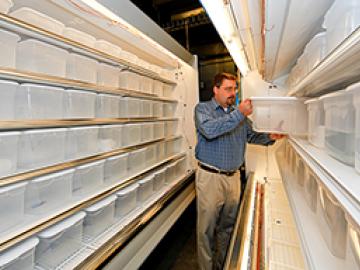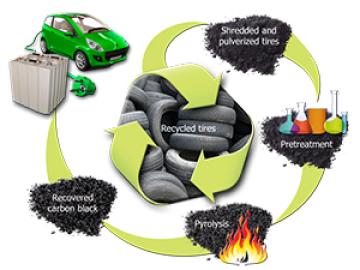Filter News
Area of Research
- (-) Clean Energy (20)
- (-) Materials (33)
- Advanced Manufacturing (4)
- Biological Systems (3)
- Biology and Soft Matter (3)
- Building Technologies (3)
- Chemical and Engineering Materials (2)
- Chemistry and Physics at Interfaces (5)
- Climate and Environmental Systems (4)
- Computational Biology (1)
- Computational Chemistry (4)
- Computational Engineering (1)
- Computer Science (1)
- Earth Sciences (1)
- Energy Frontier Research Centers (6)
- Fuel Cycle Science and Technology (1)
- Functional Materials for Energy (8)
- Fusion and Fission (1)
- Geographic Information Science and Technology (1)
- Isotopes (1)
- Materials for Computing (7)
- Materials Synthesis from Atoms to Systems (8)
- Materials Under Extremes (5)
- National Security (2)
- Neutron Data Analysis and Visualization (2)
- Neutron Science (7)
- Nuclear Science and Technology (5)
- Nuclear Systems Technology (1)
- Quantum Condensed Matter (2)
- Renewable Energy (1)
- Sensors and Controls (1)
- Supercomputing (15)
- Transportation Systems (3)
Media Contacts

Researchers at the Department of Energy’s Oak Ridge National Laboratory have demonstrated an additive manufacturing method to control the structure and properties of metal components with precision unmatched by conventional manufacturing processes. Ryan D...

Researchers at the Department of Energy's Oak Ridge National Laboratory have obtained the first direct observations of atomic diffusion inside a bulk material. The research, which could be used to give unprecedented insight into the lifespan and properties of new ma...

Scientific research may be the primary focus of the Department of Energy’s national laboratories, but for David Mandrus, the institutions play an equally important role in shaping the instruction and career paths of students.

Complex oxides have long tantalized the materials science community for their promise in next-generation energy and information technologies. Complex oxide crystals combine oxygen atoms with assorted metals to produce unusual and very desirable properties.

When Orlando Rios first started analyzing samples of carbon fibers made from a woody plant polymer known as lignin, he noticed something unusual. The material’s microstructure -- a mixture of perfectly spherical nanoscale crystallites distributed within a fibrous matrix -- looked almost too good to be true.

Blowing bubbles may be fun for kids, but for engineers, bubbles can disrupt fluid flow and damage metal.

A new concept in metallic alloy design – called “high-entropy alloys” - has yielded a multiple-element material that not only tests out as one of the toughest on record, but, unlike most materials, the toughness as well as the strength and ductility

Keeping food fresh is no easy feat. Trials of transporting ice over long distances and the hazards of systems that rely on toxic gases riddle the pages of refrigeration history. And although cooling science has come a long way in the past two centuries, modern refrigeration has an environmental cost...

Researchers at the Department of Energy’s Oak Ridge National Laboratory got a surprise when they built a highly ordered lattice by layering thin films containing lanthanum, strontium, oxygen and iron. Although each layer had an intrinsically nonpolar (symmetric) distribution of electrical charges, the lattice had an asymmetric distribution of charges. The charge asymmetry creates an extra “switch” that brings new functionalities to materials when “flipped” by external stimuli such as electric fields or mechanical strain. This makes polar materials useful for devices such as sensors and actuators.

Recycled tires could see new life in lithium-ion batteries that provide power to plug-in electric vehicles and store energy produced by wind and solar, say researchers at the Department of Energy’s Oak Ridge National Laboratory.




